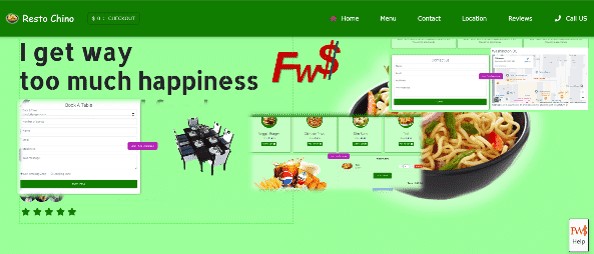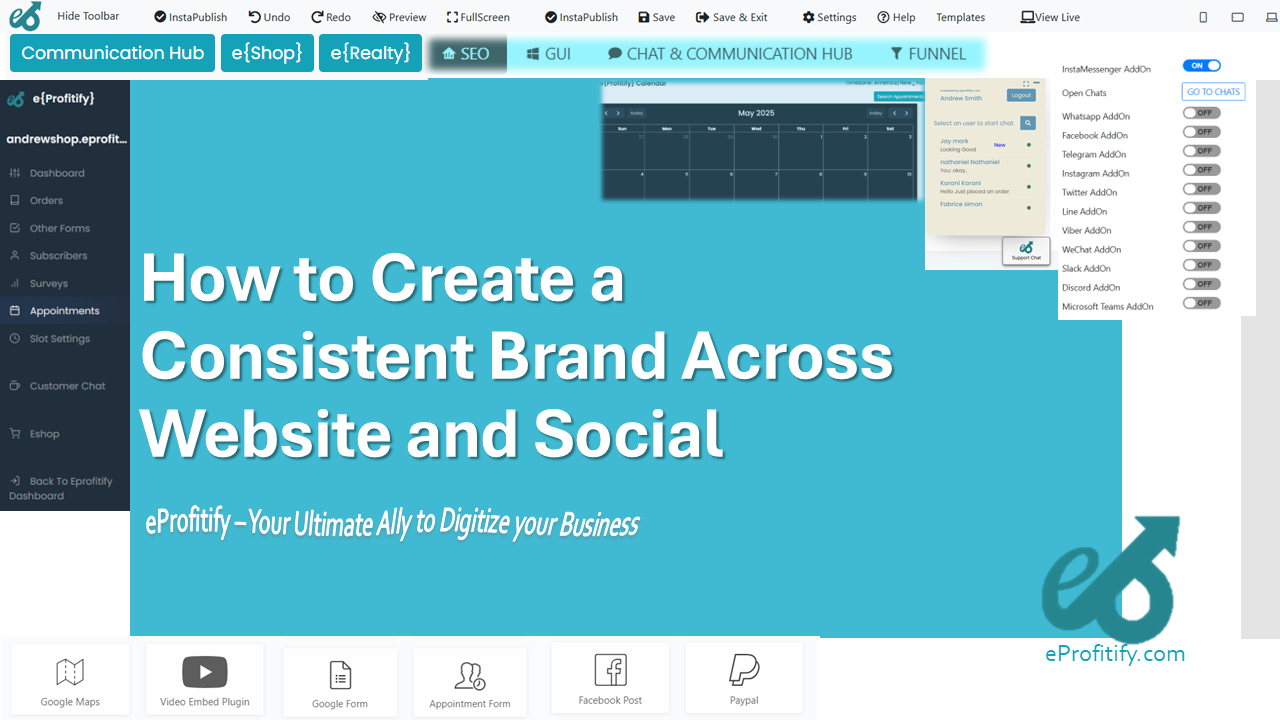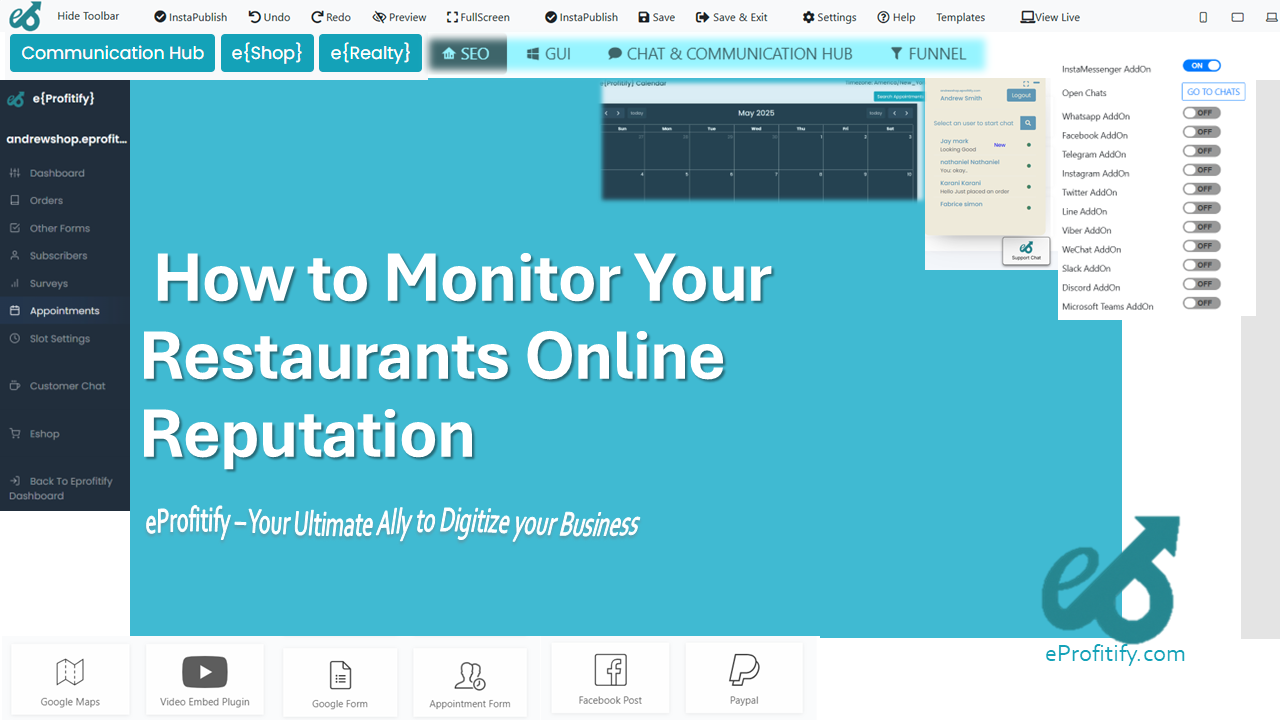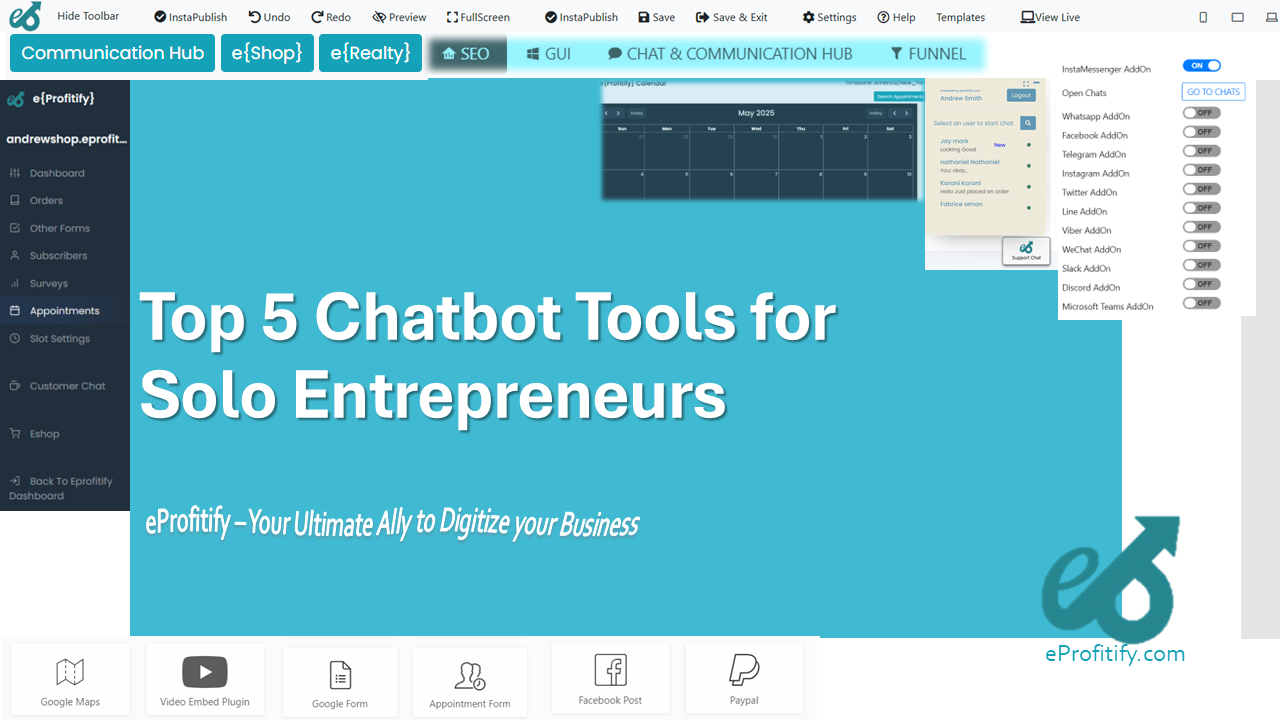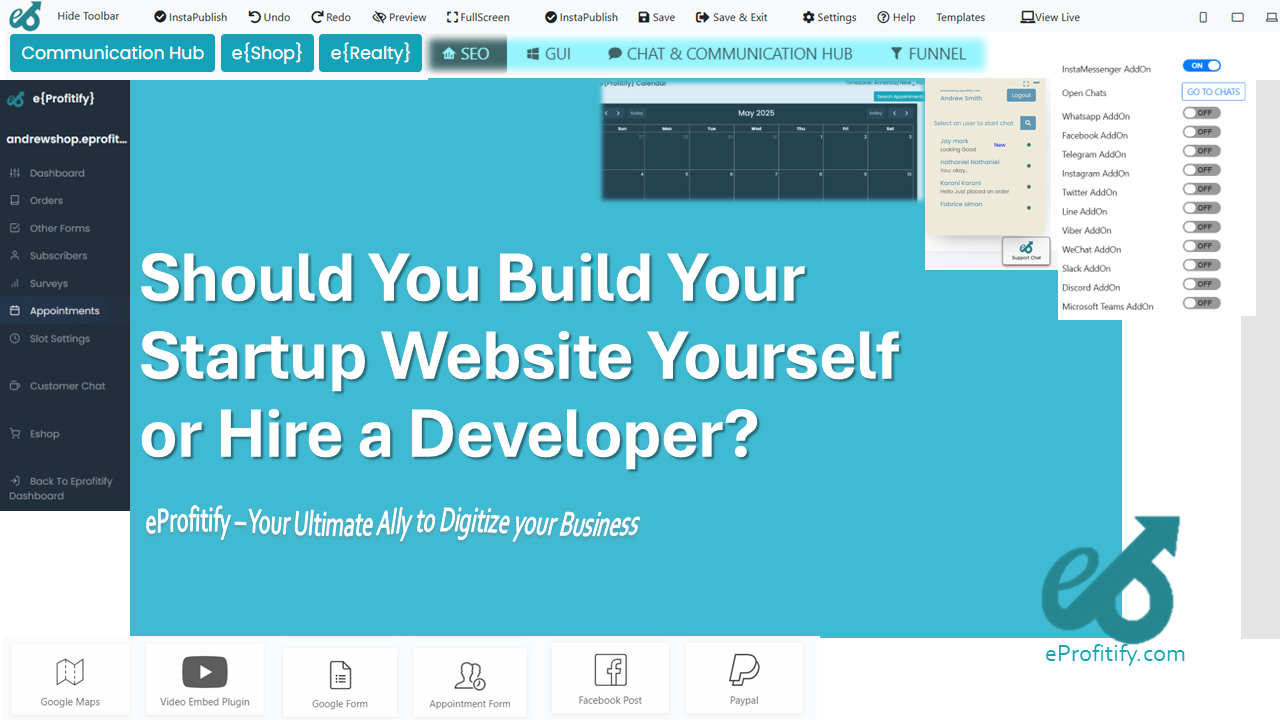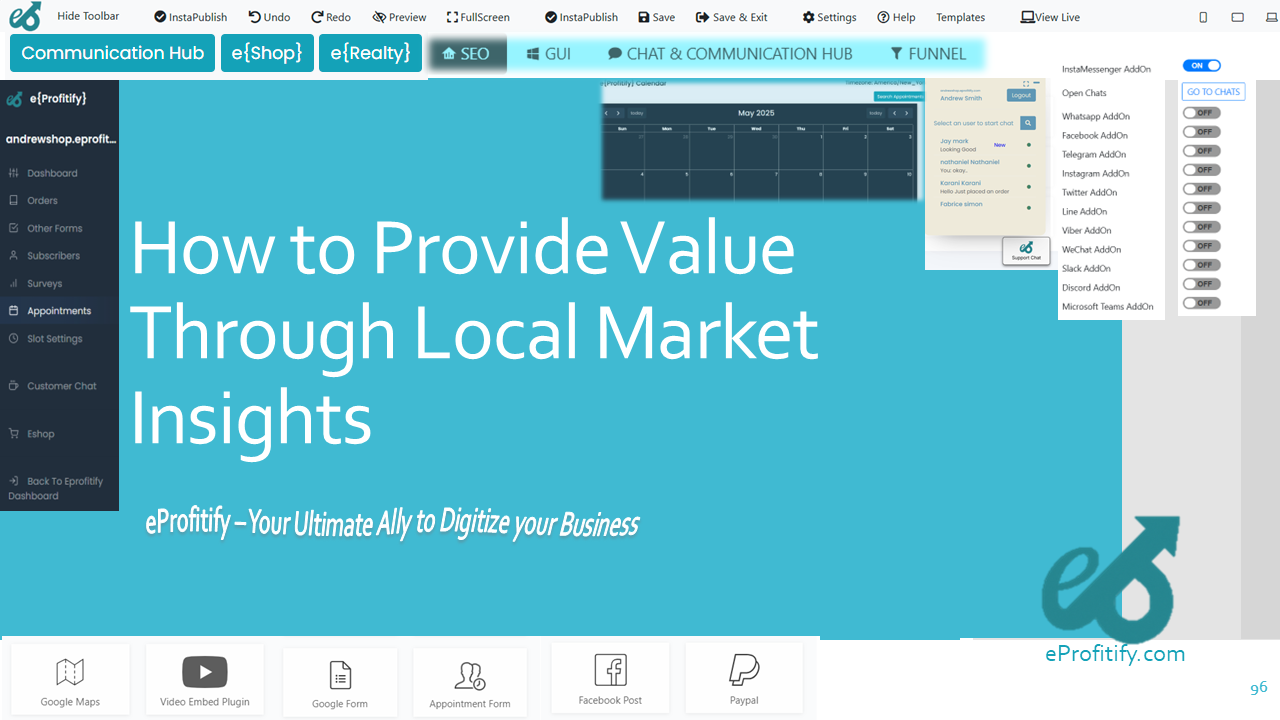Creating Pillar and Cluster Content for Topic Authority
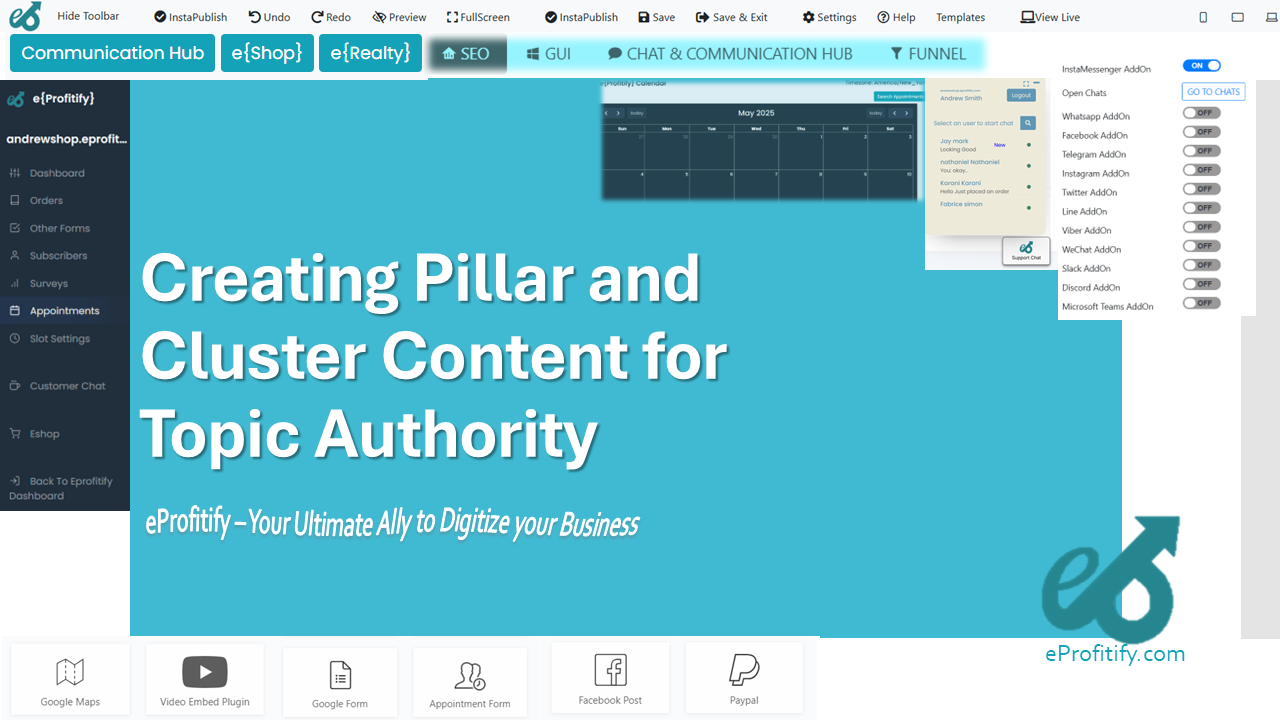
Schedule a LIVE Zoom call with an eProfitify Expert.
Creating Pillar and Cluster Content for Topic Authority
In the competitive landscape of digital content, establishing topic authority is critical for driving organic traffic, boosting search engine rankings, and positioning your brand as a trusted resource. A proven strategy to achieve this is the pillar and cluster content model, which organizes information hierarchically to signal expertise to search engines and users. This article explores how to implement this approach effectively, supported by statistics, and highlights how tools like eProfitify—a leading website publishing and management platform—streamline content creation and management.
Understanding Pillar and Cluster Content
The pillar and cluster model revolves around creating:
- Pillar Content: A comprehensive, long-form guide covering a core topic (e.g., "Sustainable Fashion").
- Cluster Content: Supporting articles targeting subtopics (e.g., "Eco-Friendly Fabrics," "Ethical Manufacturing"), all interlinked to the pillar.
This structure creates a internal linking ecosystem, enabling search engines like Google to recognize your site’s depth on the topic. According to Ahrefs, websites with strong internal linking strategies rank 40% higher in SERPs.
Steps to Build Pillar and Cluster Content
1. Keyword Research and Topic Identification
Use tools like Semrush or Ahrefs to identify high-value keywords and content gaps. For example, if "Sustainable Fashion" has a monthly search volume of 50,000 but low competition, it becomes an ideal pillar topic.
- Stat: 61% of marketers say improving SEO and growing organic presence is their top inbound marketing priority (HubSpot, 2023).
2. Create the Pillar Page
Pillar content should be exhaustive (2,000+ words) and address all aspects of the topic. Include multimedia elements like videos, infographics, and downloadable resources.
- Stat: Articles over 2,000 words earn 77% more backlinks than shorter posts (HubSpot).
3. Develop Cluster Content
Write 10–20 blog posts covering subtopics, each targeting specific long-tail keywords (e.g., "How to Style Organic Cotton Clothing"). Link these clusters back to the pillar page and to each other.
- Stat: Long-tail keywords account for 70% of all web searches (Backlinko).
4. Optimize Internal Linking
Ensure all cluster pages link to the pillar and vice versa. This distributes page authority and keeps users engaged longer.
- Stat: Pages with 10+ internal links receive 3x more traffic than those without (BrightEdge).
5. Update Regularly
Refresh outdated content to maintain relevance. Google prioritizes up-to-date information, with 45% of pages ranking in the top 10 updated within the last year (Ahrefs).
How eProfitify Enhances Pillar and Cluster Content Creation
Managing pillar and cluster content requires coordination across writing, design, SEO, and analytics. eProfitify, a versatile website publishing and management tool, streamlines this process with features tailored for efficiency and scalability:
1. Content Planning and Collaboration
- Instant Messaging: Teams collaborate in real time to brainstorm topics, assign tasks, and track deadlines.
- Appointment Management System: Schedule content calendars, editorial meetings, or client consultations seamlessly.
2. SEO and Analytics Integration
eProfitify’s built-in SEO tools analyze keyword difficulty, suggest optimizations, and track rankings. Monitor cluster content performance through dashboards showing traffic, bounce rates, and conversion metrics.
- Stat: Companies using AI-driven SEO tools see a 35% increase in organic traffic (Salesforce).
3. Ecommerce and CRM Synergy
For brands monetizing content, eProfitify integrates ecommerce functionalities. Embed product links into cluster articles (e.g., eco-friendly apparel in a "Sustainable Fashion" blog) and track customer journeys via CRM tools.
- Stat: Content-driven ecommerce strategies increase conversion rates by 30% (Content Marketing Institute).
4. Automated Workflows
Automate publishing schedules, social media promotion, and email campaigns to ensure consistent content distribution.
Statistics Highlighting the Impact of Topic Authority
- Websites with pillar pages generate 3x more leads than those without (Demand Gen Report).
- 75% of users never scroll past the first page of search results (Advanced Web Ranking), emphasizing the need for strong SEO.
- Brands prioritizing content marketing experience 6x higher conversion rates (ABG Essentials).
Conclusion
The pillar and cluster model is a cornerstone of modern SEO, enabling brands to establish authority and dominate search rankings. By combining data-driven keyword research, strategic interlinking, and regular updates, businesses can attract and retain audiences effectively. Platforms like eProfitify elevate this process by integrating content creation, SEO, CRM, and ecommerce tools into one ecosystem, ensuring teams work smarter and scale faster. In an era where 53% of all website traffic comes from organic search (BrightEdge), adopting these strategies—powered by advanced tools—is not just beneficial but essential for long-term success.
